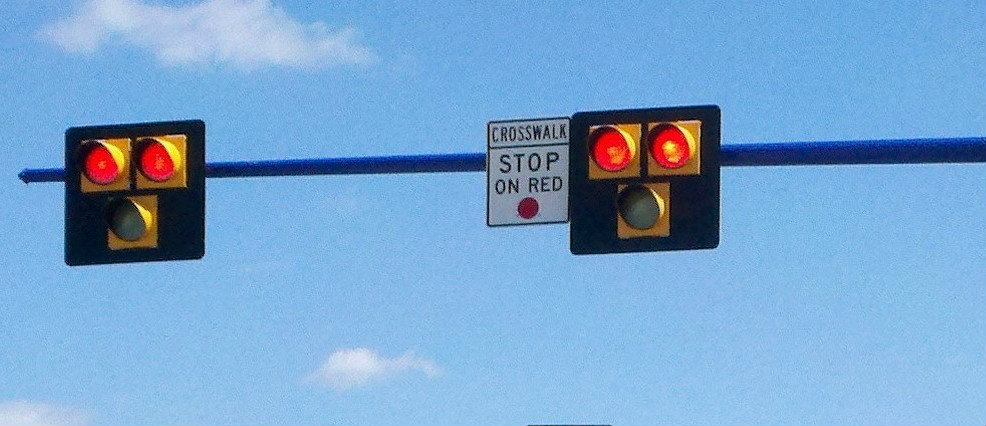
Pedestrians must be able to cross streets safely, especially in busy, heavy-traffic areas. Unfortunately, sometimes the traditional, marked crosswalks are not sufficient enough to make crossing safe.
More than 40% of pedestrian fatalities take place where no crosswalk is available. Share on XEnter HAWK, a new type of traffic signal designed to make it easier for pedestrians to safely cross the street at these busy, non-signalized locations. The good news? Since they only operate when a pedestrian activates it, they keep traffic flowing with minimal delays.
This new type of traffic signal is designed to be used in locations that do not meet traffic engineering standards for a conventional light. In areas, for example, where there are long blocks, where pedestrians use both sides of the street heavily or areas widely used by walkers, bicyclists, rollerbladers, and skateboarders, the HAWK signals help to safely manage pedestrian traffic.
A couple of places you’ll find HAWK signals in Kansas City are 38th & Main in Midtown and Independence Avenue at the KCUMB campus.
HAWK stands for High-intensity Activated Cross Walk.
The signal remains dark for traffic until a pedestrian pushes the button to cross. This activates a yellow light telling drivers to slow down and prepare to stop. When the solid red light appears, drivers must stop and stay stopped.
The next step is where the HAWK differs from conventional signals. There is no green light; however, when the red light is alternatively flashing, drivers may proceed after stopping if the crosswalk is clear.
Studies have shown a better compliance rate by motorists — up to 97% compliance with a HAWK signal — than regular signalized intersections or crosswalks with flashing yellow lights.
If you would like to receive news and blog updates on a regular basis, sign up to receive our email newsletter. Your email address will only be used to send you our newsletter and respond to inquiries.
Past results afford no guarantee of future results and each case is different and is judged on its own merits. The choice of a lawyer is an important decision and should not be based solely upon advertisements.